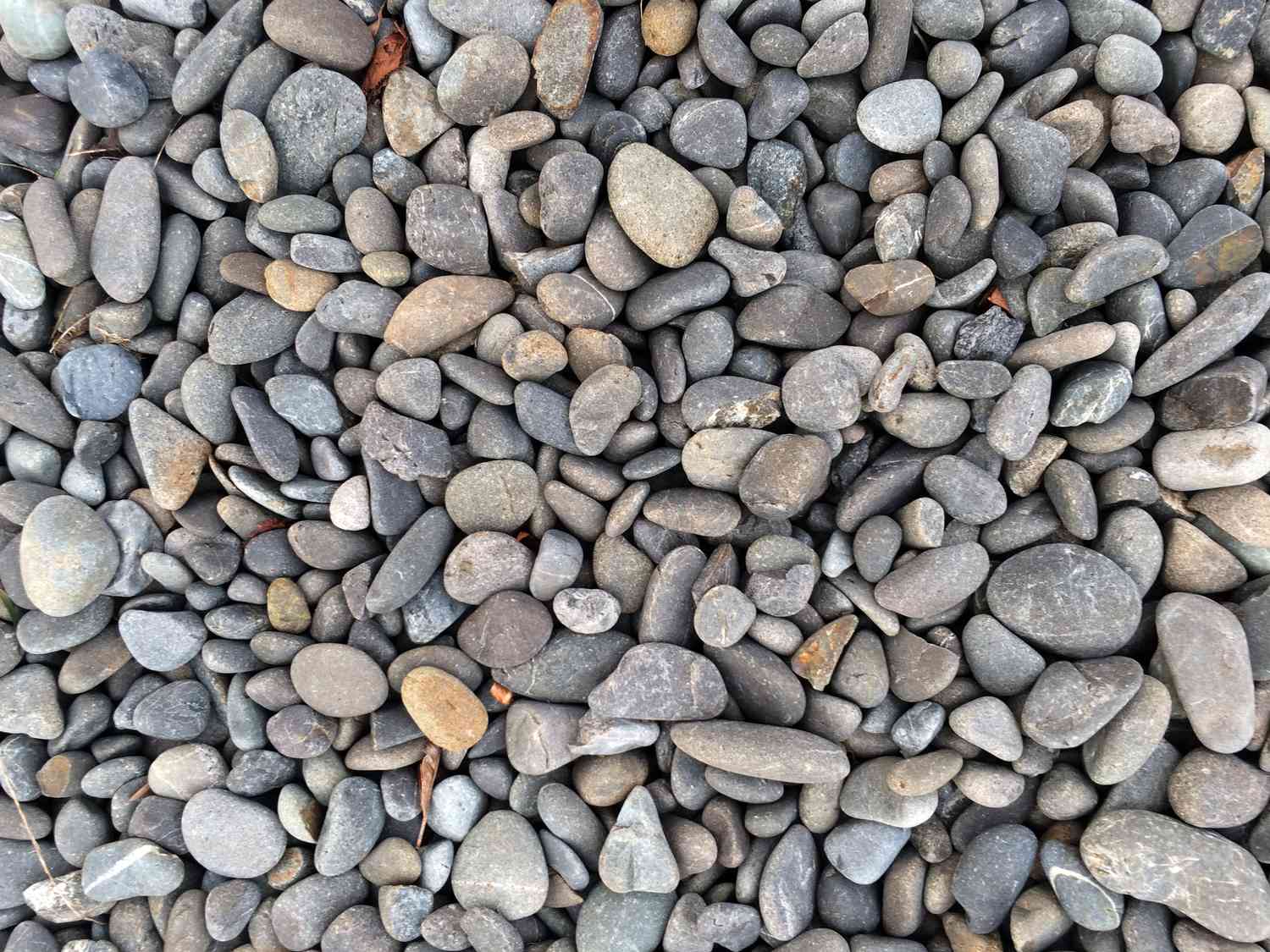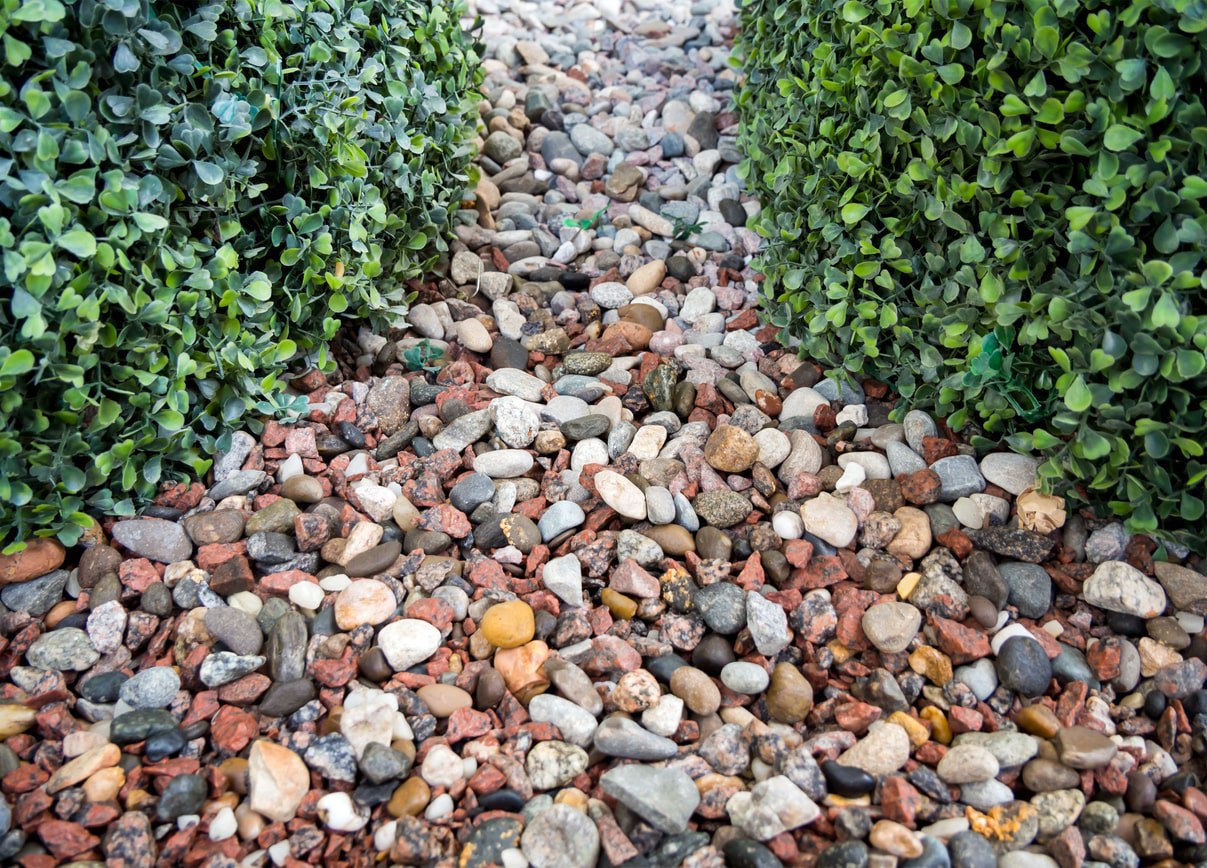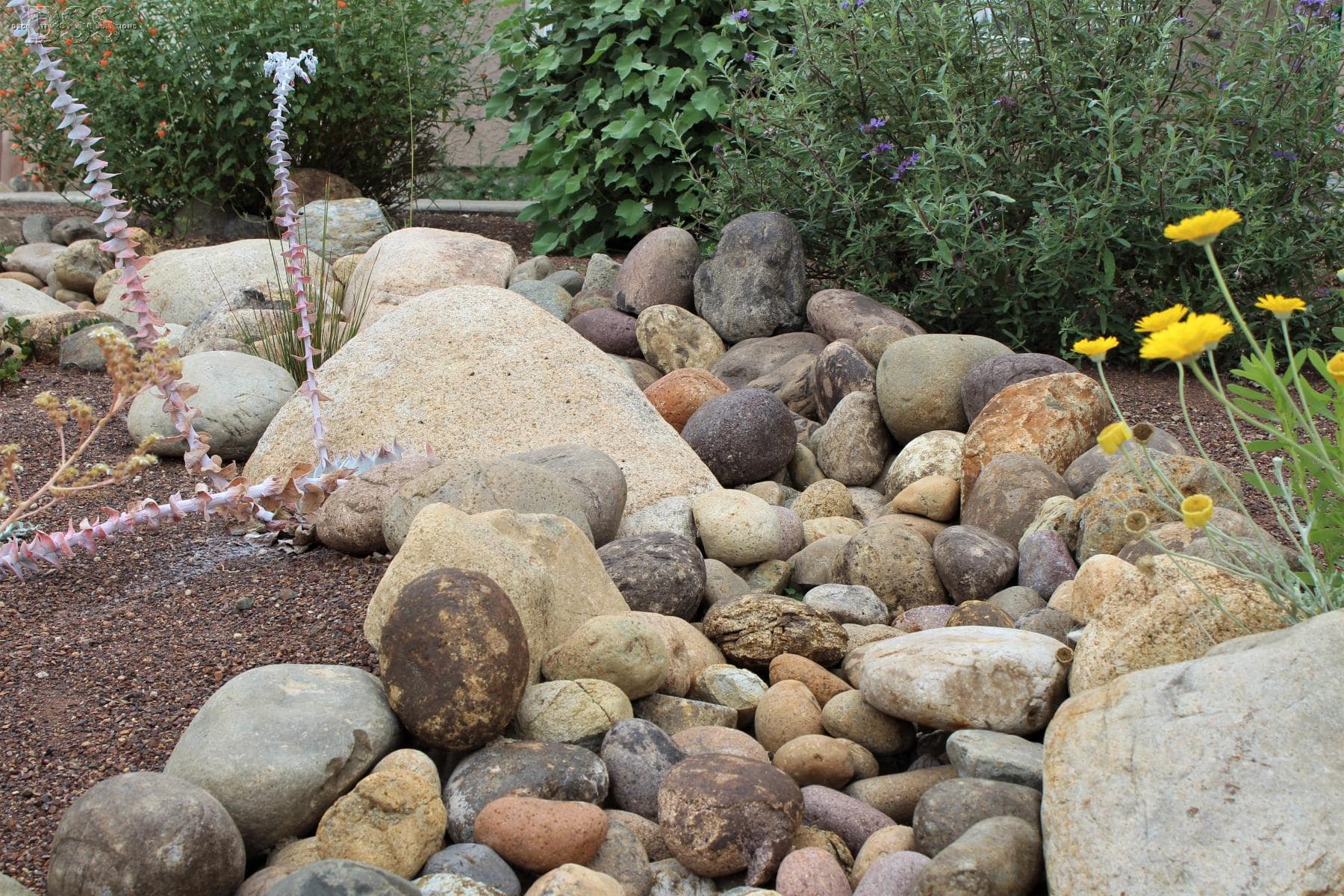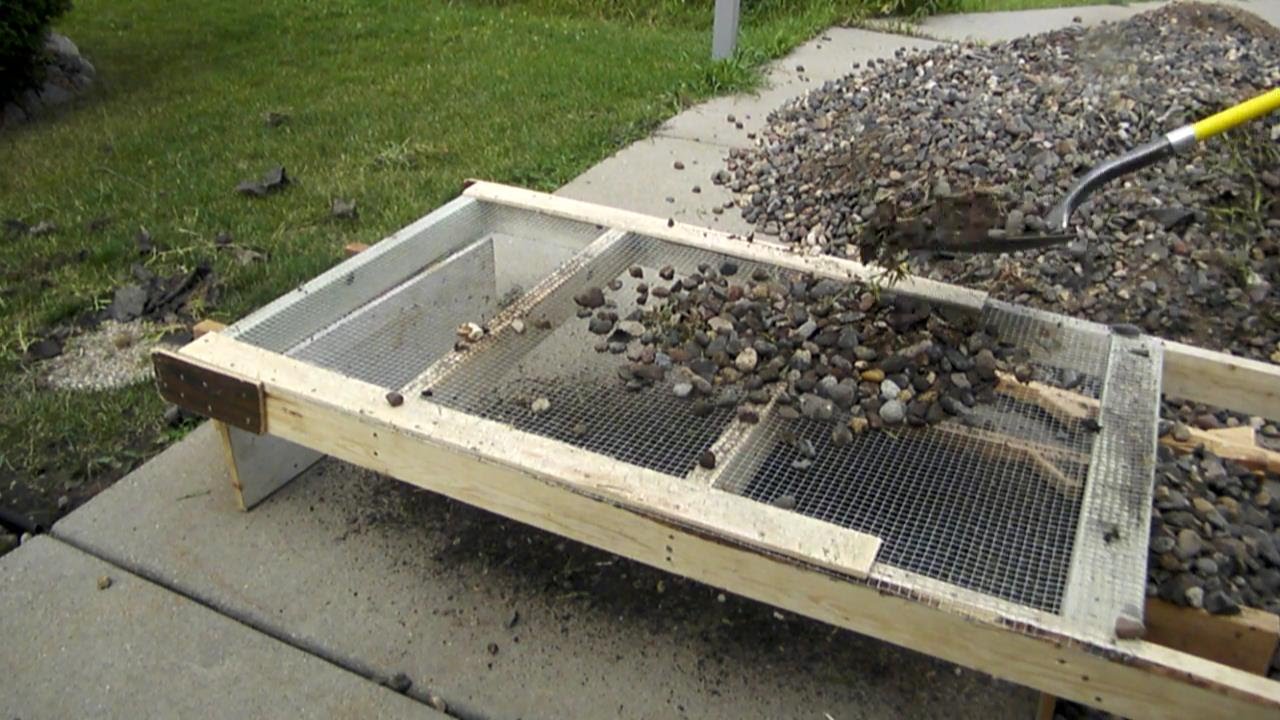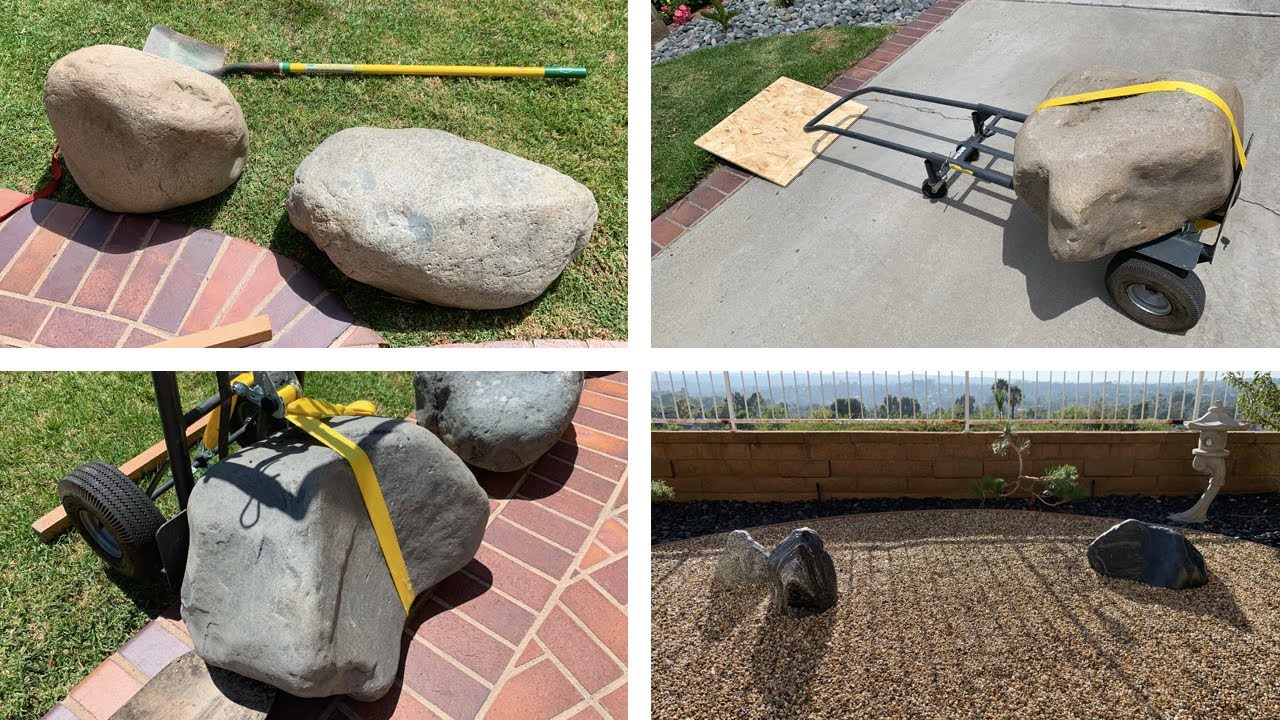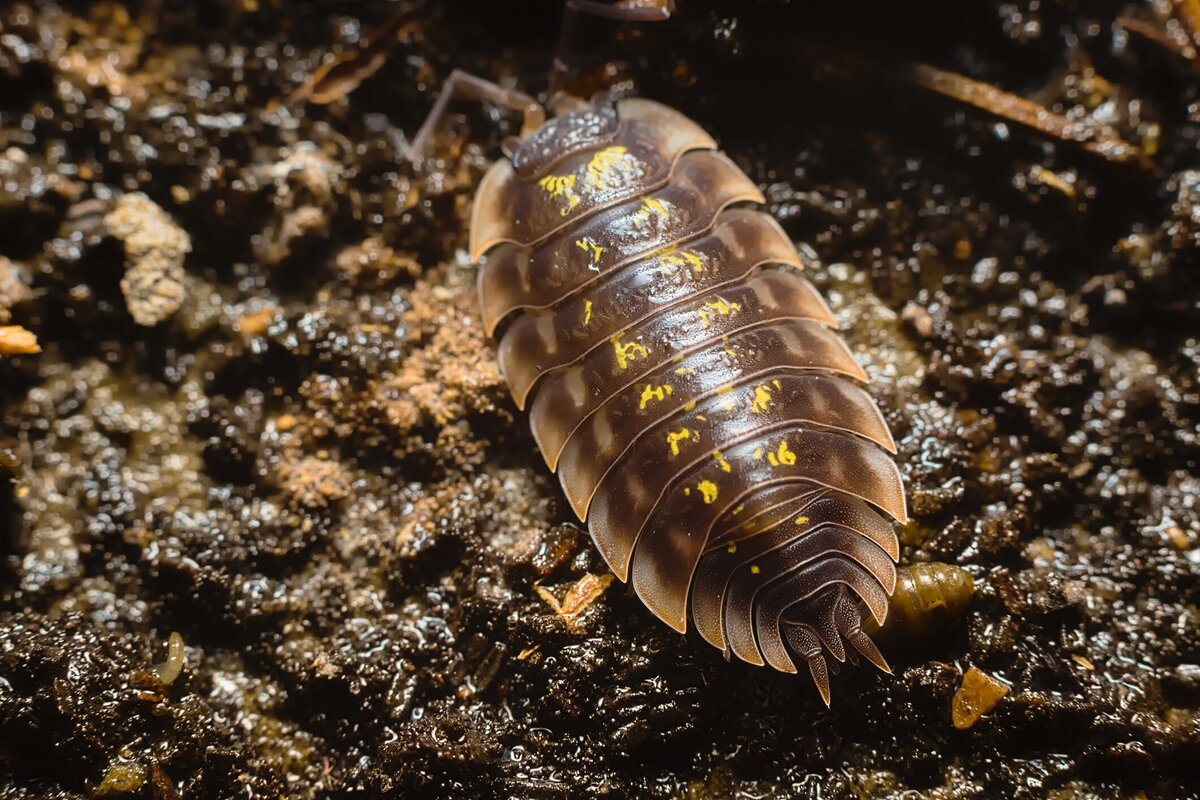Home>Garden Design>Landscape Design>What Do You Put Under Rocks For Landscaping
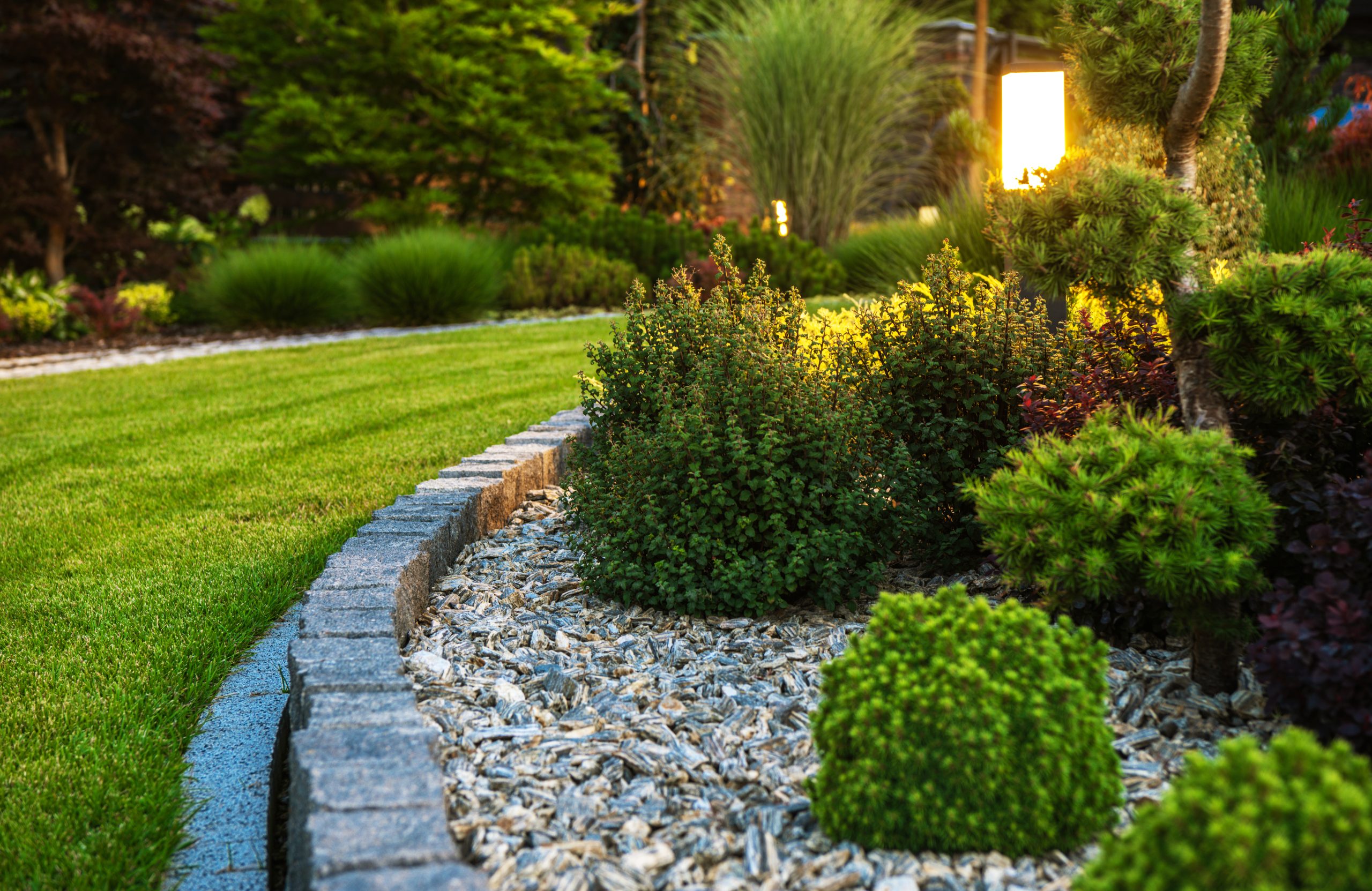

Landscape Design
What Do You Put Under Rocks For Landscaping
Modified: February 8, 2024
Enhance your landscape design with the perfect rocks. Discover what to put under rocks for landscaping and create a stunning outdoor space.
(Many of the links in this article redirect to a specific reviewed product. Your purchase of these products through affiliate links helps to generate commission for Chicagolandgardening.com, at no extra cost. Learn more)
Table of Contents
Introduction
Welcome to the world of landscaping! The art of transforming outdoor spaces into beautiful and functional areas is truly a joy. Whether you have a sprawling garden or a cozy backyard, the right landscape design can completely transform your outdoor living experience. One element that is often used in landscape design is rocks. Rocks bring a natural and aesthetic appeal to any outdoor setting, creating a sense of tranquility and beauty.
But have you ever wondered what goes under those rocks? Is there something that needs to be placed underneath them to enhance their visual appeal and longevity? The answer is yes! Placing something under rocks not only helps to prevent weed growth and erosion, but it also provides stability and longevity to the overall landscaping design. It is these underlying materials that provide a solid foundation for the rocks, ensuring they stay in place and maintain their integrity over time.
In this article, we will explore the purpose of using rocks in landscaping and delve into the benefits of placing something under them. We will also discuss various options for what to put under rocks and highlight important factors to consider when choosing the underlying material. So, whether you are a seasoned gardener looking to enhance your landscape design or a beginner just starting out, this article will provide you with valuable insights on what to put under rocks for landscaping.
Purpose of Using Rocks in Landscaping
Before we dive into what goes under rocks for landscaping, let’s first understand the purpose of using rocks in landscape design. Rocks have long been a popular choice among landscape designers and homeowners due to their versatility and natural beauty. Here are a few key reasons why rocks are used in landscaping:
- Visual Appeal: Rocks add texture, color, and depth to outdoor spaces. They can be used as focal points, borders, or decorative accents to enhance the overall aesthetics of your landscape design.
- Low Maintenance: Unlike grass or flower beds, rocks require minimal maintenance. They do not need to be watered or mowed, making them an excellent choice for those looking for a low-maintenance landscaping solution.
- Water Conservation: Rocks help to conserve water by reducing evaporation. When incorporated into your landscape design, they can help create a sustainable and water-efficient outdoor environment.
- Soil Erosion Control: Sloped areas or areas with loose soil are prone to erosion. Rocks can be strategically placed to prevent soil erosion by creating a barrier that holds the soil in place during heavy rain or wind.
- Weed Suppression: One of the biggest advantages of using rocks in landscaping is the natural weed suppression they provide. By layering rocks over the ground, sunlight is blocked, preventing weed growth and reducing the need for herbicides.
- Enhanced Drainage: Rocks can improve drainage in areas with poor soil drainage. By creating a permeable surface, excess water can easily flow through the gaps between the rocks, preventing waterlogging and ensuring healthy plant growth.
Now that we understand the purpose and benefits of using rocks in landscaping, let’s explore what goes under those rocks to maximize their effectiveness and longevity.
Benefits of Placing Something Under Rocks
When using rocks in landscaping, it is highly recommended to place something underneath them to enhance their performance and longevity. Here are some key benefits of placing an underlying material under rocks:
- Weed Prevention: One of the primary reasons for placing something under rocks is to prevent weed growth. When rocks are directly placed on the ground, weeds can find their way through the gaps and cracks. However, by using an underlying material, such as landscape fabric or weed barrier, you can effectively suppress weed growth and reduce the amount of time spent on weed removal and maintenance.
- Erosion Control: Placing an underlying material under rocks helps to control erosion. It acts as a barrier, preventing soil from being washed away during heavy rain or wind. This is especially important for sloped areas or locations prone to erosion, as it ensures the stability and integrity of the landscape design.
- Improved Drainage: Another benefit of placing something under rocks is improved drainage. Rocks themselves have natural drainage properties, but by using materials like geotextile mat or crushed stone, you can further enhance the drainage system. These materials allow water to flow through them, preventing waterlogging and promoting healthy root growth.
- Longer Lifespan: By providing a solid foundation and protection, placing something under rocks can extend their lifespan. The underlying material helps to distribute weight evenly, reducing the risk of rocks sinking or shifting. It also acts as a protective layer, preventing direct contact between the rocks and the ground, which can cause weathering and deterioration over time.
- Maintenance Reduction: By using an underlying material, you can significantly reduce the amount of maintenance required for your rock landscaping. With weed prevention and erosion control in place, you’ll spend less time pulling out weeds and repairing any erosion damage, allowing you to enjoy your outdoor space more and spend less effort on upkeep.
By placing something under rocks in your landscape design, you can reap these benefits and create a more effective and long-lasting outdoor space. Now, let’s explore some of the options available for what to put under rocks for landscaping.
Options for What to Put Under Rocks
When it comes to what to put under rocks for landscaping, there are several options available. Each option offers its own set of benefits and considerations. Here are five popular choices:
- Landscape Fabric: Landscape fabric is a porous material that allows water and air to pass through while blocking weed growth. It is typically made of woven or non-woven synthetic fibers. Landscape fabric is easy to install and provides excellent weed control. However, it may break down over time and may not be as effective in areas with heavy foot traffic.
- Weed Barrier: Similar to landscape fabric, weed barriers are designed to suppress weed growth. They are typically made of durable plastic material and are available in various thicknesses and sizes. Weed barriers are effective at preventing weeds, but they may not allow for as much water and air circulation as landscape fabric.
- Geotextile Mat: Geotextile mats are made from synthetic materials and are commonly used in landscaping and construction. They provide excellent drainage, erosion control, and weed prevention. Geotextile mats are durable and long-lasting, making them a great option for areas with heavy foot traffic or high erosion risk.
- Crushed Stone: Crushed stone is a popular option for creating a solid base under rocks. It helps to distribute weight evenly and provides excellent drainage. The size and type of crushed stone can vary depending on the desired aesthetics and function. It is important to choose a size that allows for good water flow and stability.
- Sand: Sand is another option for what to put under rocks. It provides stability and allows for good drainage. However, sand may require periodic leveling and may not be suitable for areas with heavy rainfall or erosion risk.
When selecting the underlying material for your rock landscaping, consider factors such as the level of weed control required, drainage needs, foot traffic, and personal preferences. It is also essential to prepare the ground properly before laying the underlying material to ensure a solid and level surface.
Now that we have explored the options available for what to put under rocks, let’s discuss important factors to consider when choosing the underlying material.
Landscape Fabric
Landscape fabric is a popular choice for placing under rocks in landscaping. It is a permeable material that allows water and air to pass through while blocking weed growth. Landscape fabric typically comes in rolls and is made from woven or non-woven synthetic fibers.
The primary benefit of using landscape fabric under rocks is its excellent weed control. It acts as a barrier, preventing weeds from growing up through the rocks. This reduces the need for constant weeding and maintenance, allowing you to spend more time enjoying your outdoor space.
Landscape fabric is easy to install. To use it, simply cut the fabric to fit the desired area and lay it directly on the prepared ground. Secure the edges with landscape staples or heavy rocks to keep it in place. Once the landscape fabric is in place, you can then arrange your rocks on top of it, creating a beautiful and weed-free landscape.
However, there are a few considerations to keep in mind when using landscape fabric. Over time, the fabric may break down due to exposure to sunlight and weather conditions. This can result in weed growth or the need for replacement. Additionally, landscape fabric may not be as effective in areas with heavy foot traffic, as constant walking can cause the fabric to wear down.
When using landscape fabric, it is important to properly prepare the ground by removing any existing weeds or grass. This ensures maximum effectiveness and weed suppression. It is also essential to use landscape fabric in conjunction with a layer of mulch or small stones on top of the fabric. This helps to further block light and provide an additional barrier against weed growth.
In summary, landscape fabric is an excellent option for preventing weed growth under rocks. It is easy to install and provides long-lasting weed control. However, it may require periodic replacement and may not be suitable for areas with heavy foot traffic.
Weed Barrier
Another option for what to put under rocks in landscaping is a weed barrier. Similar to landscape fabric, a weed barrier is designed to suppress weed growth and create a barrier between the rocks and the ground. Weed barriers are typically made of durable plastic materials and are available in various thicknesses and sizes.
A weed barrier is highly effective at preventing weeds from growing up through the rocks. It blocks sunlight and reduces the chances of weed seeds germinating. This greatly reduces the need for frequent weeding and maintenance, allowing you to enjoy a weed-free landscape with minimal effort.
Installing a weed barrier is relatively simple. Begin by preparing the ground, removing any existing weeds or grass. Next, lay the weed barrier directly on the ground, ensuring it covers the entire area where the rocks will be placed. Secure the edges of the barrier with landscape staples or heavy rocks to keep it in place. Finally, arrange your rocks on top of the weed barrier, creating a visually appealing and weed-free landscape.
One advantage of using a weed barrier is its durability. Weed barriers are designed to withstand the elements and can last for several years with proper installation and maintenance. They are also less prone to breakdown from sunlight exposure compared to landscape fabric.
However, it’s important to consider the trade-offs of using a weed barrier. While it effectively prevents weed growth, a weed barrier may not allow for as much water and air circulation as landscape fabric. This can potentially impact drainage and the overall health of your plants. It is crucial to ensure adequate drainage by using small stones or crushed stone under the rocks and periodically checking for any drainage issues.
Additionally, a weed barrier may not be as permeable as other underlying materials. If you live in an area with heavy rainfall, it is essential to ensure proper drainage to prevent waterlogging and potential damage to the landscape.
In summary, a weed barrier is a durable and effective option for suppressing weed growth under rocks. It provides long-lasting weed control and requires minimal maintenance. However, it is important to consider drainage and ensure proper water flow when using a weed barrier.
Geotextile Mat
When it comes to what to put under rocks for landscaping, a geotextile mat is another excellent option to consider. Geotextile mats are made from synthetic materials and are commonly used in landscaping and construction projects. They offer a range of benefits for rock landscaping.
One of the primary advantages of using a geotextile mat is its ability to provide excellent drainage. These mats are designed to allow water to flow through them, preventing waterlogging and ensuring healthy root growth. By promoting proper drainage, geotextile mats help to maintain the stability and integrity of your landscape design.
In addition to improved drainage, geotextile mats also offer strong weed control. They act as a barrier, preventing weeds from growing up through the rocks. This minimizes the need for constant weeding and maintenance, allowing you to spend more time enjoying your outdoor space.
Geotextile mats are known for their durability. They are specifically designed to withstand various weather conditions and can last for many years. This makes them an excellent long-term investment for your landscaping project.
Installing a geotextile mat is straightforward. Begin by preparing the ground, removing any existing weeds or grass. Unroll the geotextile mat directly onto the ground, ensuring it covers the entire area where the rocks will be placed. Secure the edges of the mat with landscape staples or heavy rocks to keep it in place. Finally, arrange your rocks on top of the geotextile mat, creating a visually appealing and weed-free landscape.
However, it’s important to keep in mind that geotextile mats may not be as effective in areas with heavy foot traffic. Constant walking or pressure can cause the mat to wear down and potentially impact its effectiveness. If you anticipate a lot of foot traffic in your rock landscaping area, it may be necessary to consider other alternatives.
Another consideration with geotextile mats is proper installation. It is crucial to ensure the mat is installed correctly, with no gaps or overlapping sections, to provide maximum effectiveness.
In summary, a geotextile mat is a durable and effective option for placing under rocks in landscaping. It offers excellent drainage, weed control, and long-term durability. However, it may not be suitable for areas with heavy foot traffic, and proper installation is crucial for optimal performance.
Crushed Stone
Crushed stone is a versatile and popular choice for what to put under rocks in landscaping. It serves as a solid base material that provides stability, excellent drainage, and weed suppression. Crushed stone is available in various sizes and types, allowing you to choose the best option for your specific landscaping needs.
One of the primary advantages of using crushed stone is its ability to provide a stable and level surface for your rock landscaping. It helps to distribute weight evenly, preventing rocks from sinking or shifting over time. This stability is particularly important for areas with heavy foot traffic or where you want to place larger rocks or boulders.
In addition to stability, crushed stone offers excellent drainage properties. Its porous nature allows water to flow through the gaps between the stones, preventing waterlogging and maintaining healthy soil conditions for your plants. Proper drainage is essential for the long-term health and vitality of your landscape.
Crushed stone is also effective in suppressing weed growth. By creating a barrier between the soil and the rocks, crushed stone blocks sunlight and inhibits weed seeds from germinating. This reduces the need for frequent weeding and helps to keep your rock landscaping clean and weed-free.
When using crushed stone, it is important to choose the appropriate size and type for your specific application. Smaller stones, such as gravel, are ideal for pathways or areas where you want a more compact and stable surface. Larger stones, such as crushed granite, can be used as a decorative feature or a base for larger rocks or boulders.
Proper installation is crucial when using crushed stone. Begin by preparing the ground, removing any existing vegetation and leveling the area. Add a layer of crushed stone to the desired thickness, usually around 2-4 inches, and compact it with a tamper or roller to create a firm and even surface. Finally, arrange your rocks on top of the crushed stone, completing your beautiful rock landscaping.
It is important to periodically check the condition of the crushed stone and replace any damaged or eroded areas. This will help maintain the stability and integrity of your landscape design.
In summary, crushed stone is a versatile and effective option for placing under rocks in landscaping. It provides stability, excellent drainage, and weed suppression. By choosing the appropriate size and type of crushed stone and properly installing it, you can create a beautiful and long-lasting rock landscape.
Sand
Sand is another option to consider for what to put under rocks in landscaping. It offers several benefits, including stability, drainage, and ease of use. Sand is available in different types, such as coarse sand or play sand, allowing you to choose the most suitable option for your specific needs.
One of the primary advantages of using sand as an underlying material is its ability to provide stability. Sand creates a level surface, allowing rocks to sit securely in place. This is especially important if you have larger rocks or boulders in your landscaping design. The stability provided by sand prevents rocks from sinking or shifting, ensuring the longevity and integrity of your landscape.
In addition to stability, sand offers good drainage properties. It is a porous material that allows water to flow through it easily. This ensures that excess moisture doesn’t accumulate around the rocks, minimizing the risk of waterlogging and promoting healthy plant growth.
Another benefit of using sand is its ease of use. It can be easily spread and leveled, giving you greater control over the final appearance of your rock landscaping. Sand also provides a soft and comfortable surface, making it ideal for areas where you may walk barefoot, such as around pool decks or garden paths.
When using sand, it is important to choose the appropriate type and grade for your specific application. Coarse sand is typically recommended for landscaping projects as it provides better drainage and stability. Play sand, which is finer in texture, can be used for more decorative purposes, such as in Zen gardens or children’s sandboxes.
Proper installation is also crucial when using sand. Begin by preparing the ground, removing any existing vegetation and leveling the area. Spread a layer of sand to the desired thickness, typically around 2-3 inches, and use a rake or leveling tool to create an even surface. Finally, arrange your rocks on top of the sand, creating a visually appealing and stable rock landscaping design.
It is important to note that sand may require periodic maintenance and leveling, especially in areas with heavy rainfall or foot traffic. Regularly inspect the condition of the sand and add more as needed to maintain its level and stability.
In summary, sand is a versatile and easy-to-use option for placing under rocks in landscaping. It provides stability, good drainage, and a comfortable surface. By choosing the appropriate type and grade of sand and properly installing it, you can create a beautiful and long-lasting rock landscape.
Factors to Consider When Choosing Underlying Material
When deciding what to put under rocks for landscaping, it is essential to consider several factors that will impact the effectiveness and longevity of your landscape design. Here are some key factors to keep in mind when choosing the underlying material:
- Weed Control: Consider the level of weed control you require. Some underlying materials, like landscape fabric and weed barriers, offer excellent weed prevention properties, while others, like sand, may require additional weed control measures.
- Drainage: Evaluate the drainage needs of your landscape. If you have areas with poor drainage, choosing an underlying material that promotes water flow, such as geotextile mats or crushed stone, is crucial to prevent waterlogging and maintain healthy plants.
- Stability: Determine the level of stability needed for your rock landscaping. If you have larger rocks or areas with heavy foot traffic, opt for a more stable underlying material like crushed stone or sand, which provides a solid base and prevents rocks from shifting over time.
- Durability: Consider the durability of the underlying material. Some materials, like landscape fabric, may break down over time and require periodic replacement. Choose a material that can withstand the elements and can last for years, such as geotextile mats or weed barriers.
- Aesthetics: Take into account the visual appeal of the underlying material. While it may not be visible once the rocks are in place, choosing a material that complements your overall landscape design can enhance the overall aesthetics of your outdoor space.
- Maintenance: Evaluate the level of maintenance required for the underlying material. Some materials, like sand, may need periodic leveling or replenishing, while others, like geotextile mats, require minimal to no maintenance. Consider your lifestyle and the amount of time you are willing to dedicate to maintaining your rock landscaping.
- Budget: Consider the cost of the underlying material. Some options, like sand, may be more budget-friendly, while others, like geotextile mats or high-quality weed barriers, may have a higher upfront cost. Take into account your budget and the long-term value and benefits of each option.
By considering these factors, you can make an informed decision and choose the underlying material that best suits your specific needs and preferences.
Remember, proper installation and maintenance are crucial for any underlying material you choose. Ensure that the ground is properly prepared before laying the material and inspect it regularly to address any issues that may arise over time.
Ultimately, by choosing the right underlying material, you will create a solid and long-lasting foundation for your rock landscaping, allowing you to enjoy a beautiful and low-maintenance outdoor space for years to come.
Conclusion
Choosing the right underlying material for your rock landscaping is essential to ensure its stability, longevity, and overall aesthetic appeal. By placing something under rocks, such as landscape fabric, weed barriers, geotextile mats, crushed stone, or sand, you can enhance the performance of your landscape design in several ways.
These underlying materials provide numerous benefits, including weed prevention, erosion control, improved drainage, longer lifespan, and reduced maintenance. They form a solid foundation for your rocks, keeping them in place, suppressing weed growth, and protecting against erosion and weathering.
When selecting the underlying material, it is important to consider factors such as weed control needs, drainage requirements, stability for heavy foot traffic or larger rocks, durability, aesthetics, maintenance, and your budget. Each material has its own advantages and considerations, so choose the one that best aligns with your landscaping goals and preferences.
Regardless of the underlying material you choose, proper installation and regular maintenance are key to ensuring its effectiveness. Prepare the ground properly before laying the material, follow the installation instructions, and periodically inspect and address any issues that may arise over time.
Rock landscaping with an appropriate underlying material can transform your outdoor space into a beautiful, low-maintenance, and weed-free oasis. Whether you opt for landscape fabric for optimal weed control, geotextile mats for superior drainage, or crushed stone for stability and longevity, your rock landscaping will thrive and provide a stunning focal point for your outdoor area.
So, take the time to consider your options, plan your design, and invest in the right underlying material. With careful thought and implementation, your rock landscaping will not only be visually appealing but also long-lasting and easy to maintain, allowing you to enjoy your outdoor space for years to come.

